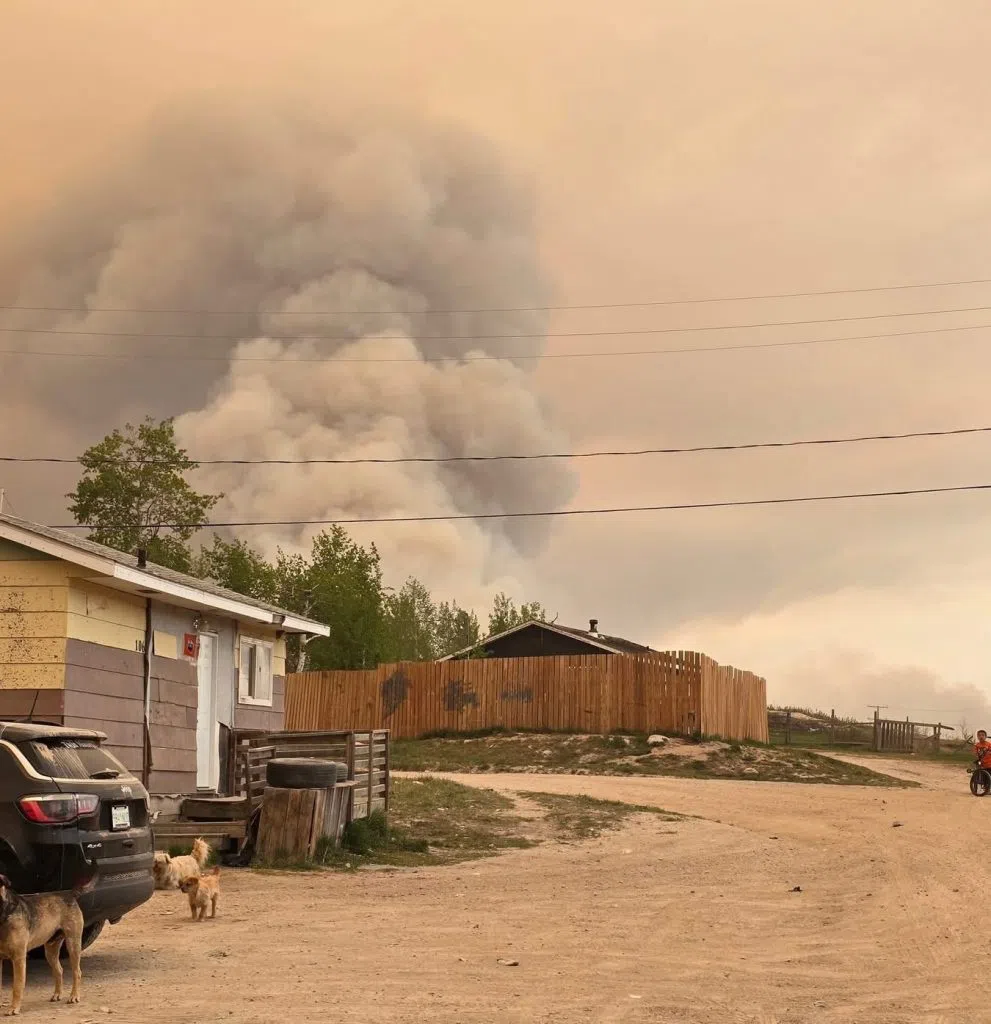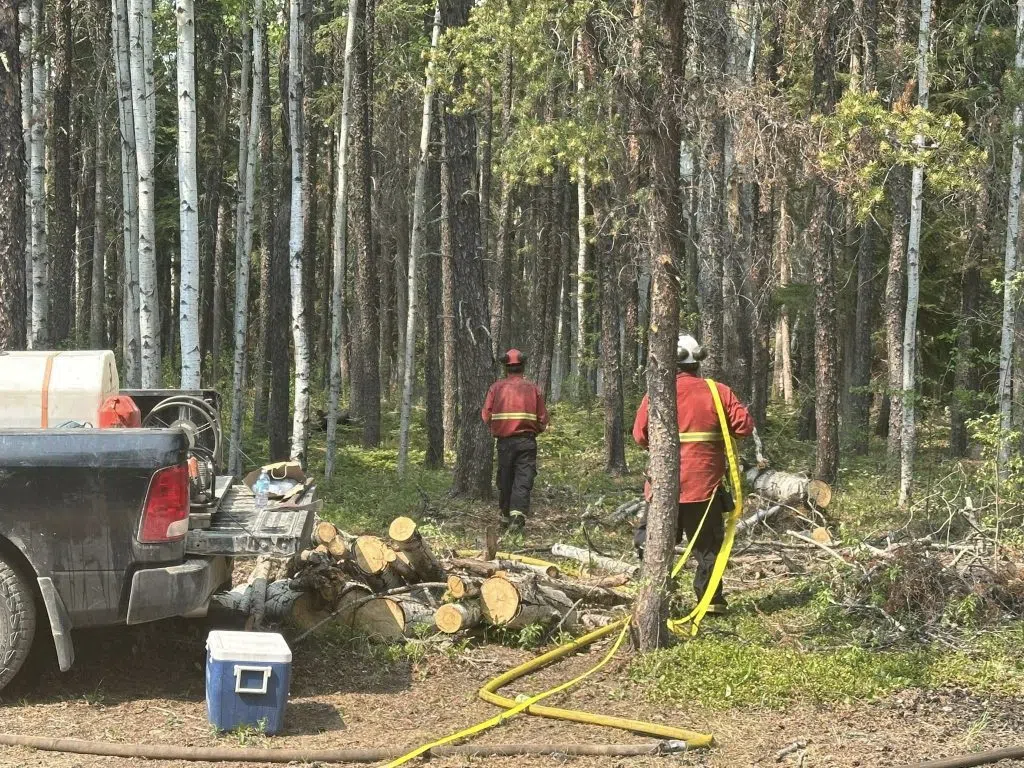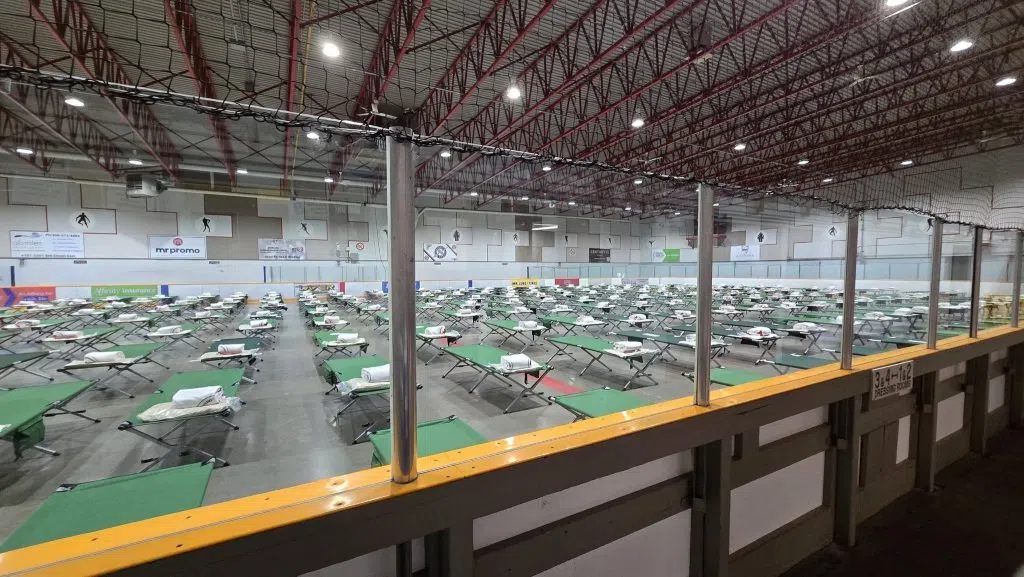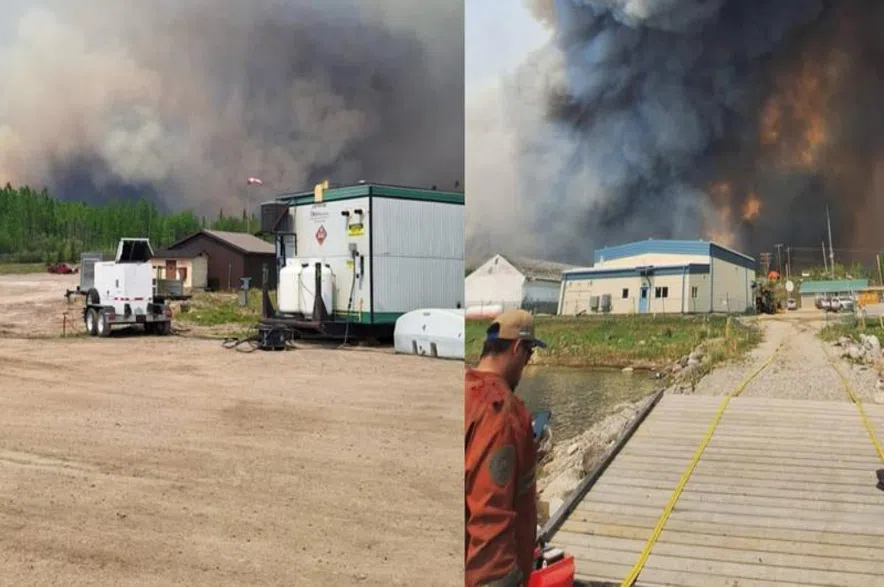By:
Nola Moris travelled from Sandy Bay to Prince Albert for a quick grocery run, but when she tried to go home, the highways were closed due to wildfires burning in the north. She’s been stuck in Prince Albert ever since.
“There was no evacuation on the horizon, and so we thought we’d be safe enough to come and get some groceries and head back home,” she said.
“But then, in a span of 24 hours, all plans were changed. Pelican Narrows was evacuated. No one could go through and we’re out here doing our best I guess and my anxiety was through the roof for the first couple days and I’m just doing what we can to keep from being so worried about my kids, especially back home and also for all the babies and the families that might be running low on supplies too.”
Read More:
- Premier Scott Moe, SPSA declare provincial State of Emergency
- Thursday wildfire update: 4,300 currently evacuated in Sask.
- Winnipeg opens its doors as thousands flee crippling fires in northern Manitoba
Darcy Highway was evacuated from his home in Pelican Narrows when the order was first issued on May 25. He’s been staying in a hotel in Prince Albert with his brother.
“It was a lot of smoke, and then we had to go all the way around towards La Ronge just to come to Prince Albert. We couldn’t take the main road to come this way,” he said.

Residents from Pelican Narrows were forced to evacuate with few belongings in tow. (Sarah Swan/Facebook)
With 4,300 evacuees now displaced by wildfires in Saskatchewan, his family has been spread out between different hotels and different communities. According to the Saskatchewan Public Safety Agency, evacuees are currently staying in Prince Albert, Saskatoon, Regina, and more may be headed to Nipawin, Weyburn and Estevan.
Sarah Swan, an evacuee from Pelican Narrows, said she heard some may even be sent to Lloydminster and Edmonton.
Swan is now helping to coordinate her fellow evacuees in Saskatoon, where they’re asking for donations of hygiene products, food and clothing to be taken to the Heritage Inn. She said leaving home in such a short amount of time wasn’t easy, and for some, the process was harrowing.
“Some residents had to escape by boat and then they got stuck on an island. That happened yesterday. Then they were taken later to Jan Lake,” Swan said.
Swan said the stranded people were eventually able to evacuate safely. Now that the fire has intensified, the only people left in the community are the wildland firefighters. She’s heard part of the community’s cemetery has been burned. She said it’s hard for evacuees not to think about what may be happening to their homes and belongings, quads, boats and for some, the dogs they had to leave behind.
“I live close to the bush, so there’s sprinklers on the road towards our house, so they’re trying their best to save our houses,” she said.
Chief of the Lac La Ronge Indian Band Tammy Cook-Searson has been keeping close tabs on the Pisew fire, which forced the evacuation of Hall Lake. She said when First Nations communities are evacuated, local leadership will hire people to help coordinate evacuations or stick around as security to ensure anyone left behind, including pets, can be taken care of.
“Not everyone leaves when you do an evacuation order, so we just try to make sure the community members who are there are safe. We work with the SPSA, we work with the RCMP, so we have close communication with everyone who is helping us and PAGC and First Nations Emergency Management,” Cook-Searson explained.
She said contingency plans are made in the event evacuation routes are cut off by fire and smoke, which is exactly what happened on Hanson Lake Road and Highway 2. Emergency teams were forced to evacuate people by boat and helicopter in isolated areas like Morning Lake and Brabant Lake.

A line of vehicles wait to be transported through the fire zone by a pilot vehicle near Weyakwin. (Derek Cornet/larongeNOW)
RCMP members in northern communities don’t plan and execute evacuation orders, but they do assist the efforts put forward by the SPSA and local leadership in the communities. RCMP communications analyst Aynsley Calder said officers will help notify residents by going door-to-door and ensuring residents get to designated areas.
“[They] provide supports such as traffic control and parameter control along roads, highways, safe routes, and hazardous areas. Officers in the community also conduct roving patrols through neighbourhoods and use a number of crime deterrent strategies to ensure the security of evacuated homes and communities,” Cook-Searson said.

The Premier suggested anyone with wildland fire training contact their nearest fire base, as more resources are needed. (Derek Cornet/larongeNOW)
On Wednesday, the Lac La Ronge Indian Band, Peter Ballantyne Cree Nation, and Montreal Lake Cree Nation declared a joint State of Emergency in response the escalating wildfire threat impacting communities across the Northeast.
“These wildfires are pushing our communities to the edge, and the situation is growing more serious by the hour. We’re seeing the toll this is taking – on our families, on our health, and on our homelands. This joint declaration reflects our urgency and our unity. We’re asking for timely and coordinated action so that our Nations can continue to protect our people with the full backing and partnership of government,” said Chief Joyce McLeod-Naytowhow of Montreal Lake Cree Nation.
During a press conference on Thursday, Premier Scott Moe said he’s kept in constant communication with First Nations leaders whose communities have been impacted.
“Folks that may be evacuated from their community or anyone that is certified as a wildland firefighter, please identify yourself to your nearest fire base and identify yourself as available and ready to go to work because our provincial team does need the resources and we’d love to know who you are and put you to work sooner rather than later in keeping your community or maybe a neighbouring community safe,” Moe said.

Facilities in Saskatoon are being prepared in the event more evacuees arrive. (Robert Pearce/Facebook)
For now, evacuees like Moris are sitting in wait, wondering when they’ll get a chance to go home and what they will be returning to.
“We’re out here and just going day-to-day, where are we going to go next, and the hotel rooms are all packed. There’s no rooms available, which might make us go more south and I’m trying to avoid that. I’m trying to go home, not go further.”











